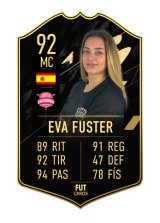1. Introduction to Additive Multipliers and Dynamic Patterns
In the evolving landscape of digital gaming, especially within slot mechanics, understanding how multipliers influence gameplay is crucial for both players and developers. Additive multipliers are a specific type of bonus mechanic that increase payout amounts by adding a fixed value to the total winnings, rather than multiplying them. This subtle difference significantly impacts the formation of dynamic patterns, which are sequences of winning spins or symbol arrangements that evolve over time, creating engaging visual and strategic experiences.
Dynamic pattern formation refers to the ever-changing sequences that emerge during gameplay, driven by mechanics like wilds, expanding symbols, and multipliers. These patterns are not only visually stimulating but also psychologically compelling, encouraging continued play. For players, grasping the mechanics behind these patterns enhances strategic decision-making; for developers, it offers avenues to craft more engaging and rewarding experiences.
2. Fundamental Principles of Additive Multipliers
a. How additive multipliers differ from other multiplier types
Unlike multiplicative multipliers that multiply the total payout by a factor (e.g., 2x, 5x), additive multipliers increase the payout by adding a fixed amount. For example, if a base payout is 100 coins and an additive multiplier of +50 is applied, the total becomes 150 coins. When stacking multiple additive multipliers, these are summed before being added to the payout, which can lead to significant cumulative effects.
b. Impact of stacking and cumulative effects on payout potential
Stacking additive multipliers creates a cumulative effect that can dramatically escalate winnings. For instance, applying three +20 additive multipliers results in an additional 60 coins, leading to a larger overall payout than a single multiplier of +60. This stacking encourages players to aim for sequences or features that trigger multiple additive effects, fostering dynamic pattern growth.
c. Examples of additive multiplier applications in various game scenarios
- Wild symbol expansions that add +10 to the total win for each occurrence, stacking during bonus rounds.
- Feature spins where each triggered bonus adds +15, cumulatively increasing potential payouts.
- Progressive bonus meters that, upon filling, grant an additive multiplier boost of +50, enhancing subsequent wins.
3. The Role of Dynamic Patterns in Enhancing Player Engagement
a. Explanation of pattern formation and recognition in gameplay
Players subconsciously seek recognizable patterns—such as sequences of wilds, scatters, or expanding symbols—that signal potential wins. These patterns develop dynamically as symbols shift, expand, or trigger bonus effects, creating a visual rhythm that maintains interest.
b. How additive multipliers influence the emergence and evolution of patterns
Additive multipliers can act as catalysts within these patterns. For example, a series of wild expansions combined with +10 multipliers can produce a crescendo of increasing payout potential, encouraging players to anticipate the next pattern phase. Over time, these effects foster complex, layered patterns that evolve with each spin, deepening engagement.
c. Psychological effects of dynamic patterning on player retention
Research shows that dynamic visual and numerical patterns stimulate dopamine release, reinforcing the desire to continue playing. The unpredictability of pattern evolution, especially when enhanced by additive multipliers, creates a sense of anticipation and reward, which are key to player retention.
4. Case Study 1: Wild Spirit’s Expansion and Its Relation to Additive Mechanics
a. How Wild Spirit expands upward only during wins, creating pattern opportunities
In games like Wild Spirit, wild symbols expand vertically during winning spins, filling columns and creating new opportunities for consecutive wins. These upward expansions form recognizable vertical patterns, which can be further amplified when combined with additive multipliers, increasing the payout potential with each successful sequence.
b. The interplay between wild expansion and additive multipliers in forming winning sequences
When wilds expand and trigger bonus features, additive multipliers often come into play, stacking with wild expansion effects. For example, a wild expansion during a winning line might add +20 to the total payout, which, if repeated across multiple wilds, can lead to significant cumulative increases, reinforcing the pattern’s visual and payout significance.
c. Lessons from Wild Spirit’s mechanics for designing engaging dynamic patterns
- Encourage sequential wild expansion to build predictable yet exciting pattern growth.
- Integrate additive multipliers that activate during wild expansion to enhance payout effects.
- Design visual cues that highlight pattern formation and multiplier effects to aid player recognition.
5. Case Study 2: Modern Examples — «Aiko and the Wind Spirit»
a. How bonus features like Featurespins increase trigger chances (e.g., 5× boost) and contribute to pattern complexity
Modern games like aiko wnd sprit incorporate features such as Featurespins, which can increase trigger probabilities by substantial margins—sometimes up to 5×—leading to richer, more complex pattern formations. These features create layered sequences, amplifying the visual and payout variability, which keeps players engaged and intrigued.
b. Use of additive multipliers to reach maximum wins (up to 10,000×)
By stacking multiple additive multipliers triggered through bonus features, players can reach extraordinary payout levels—up to 10,000× of the initial bet. This is achieved through a combination of wild expansions, bonus spins, and multiplier boosts, illustrating how nuanced mechanics can produce unpredictable yet rewarding pattern evolutions.
c. Illustration of how such features create unpredictable yet rewarding pattern formations
These dynamic features generate a tapestry of evolving patterns—wild clusters, scatter-triggered sequences, and multiplier chains—that appear unpredictable but are grounded in well-designed mechanics. The anticipation of pattern shifts, combined with visual and auditory cues, enhances the thrill of potential big wins.
6. Enhancing Dynamic Patterns through Additive Multipliers: Strategies and Techniques
a. Combining multiple multipliers for complex pattern evolution
Developers often combine several additive multipliers triggered by different features—such as wilds, scatters, or bonus spins—to create intricate pattern evolutions. For example, stacking +10, +20, and +50 multipliers across different symbols or spins can produce a layered payout structure that evolves over time, leading to a rich visual tapestry.
b. Timing and placement of multipliers to maximize pattern diversity
Strategic placement of multiplier triggers—such as during initial spins or following specific symbol alignments—maximizes pattern diversity. Timing is critical; introducing multipliers after certain pattern formations can amplify the visual and payout effects, encouraging players to anticipate and influence pattern evolution.
c. Balancing multiplier effects to maintain game fairness and excitement
While stacking multipliers enhances excitement, designers must balance these effects to prevent unfair advantages. Implementing caps or diminishing returns ensures players remain engaged without feeling overwhelmed by overly generous payouts, maintaining a fair and thrilling experience.
7. Non-Obvious Factors Influencing Pattern Dynamics and Multiplier Effectiveness
a. The role of randomness versus deterministic pattern evolution
While some patterns emerge from deterministic mechanics—like fixed wild expansion rules—many are influenced by randomness, such as the unpredictable appearance of bonus symbols. Additive multipliers can either amplify randomness effects or be part of deterministic sequences, affecting how patterns evolve and how predictable they appear.
b. Impact of game design choices on the perception of pattern predictability
Design choices, such as visual cues, sound effects, and multiplier triggers, shape player perceptions of pattern predictability. A well-designed game balances apparent randomness with underlying mechanics, fostering a sense of control and anticipation.
c. How visual and auditory cues reinforce pattern recognition and multiplier anticipation
Visual effects like glowing wilds, expanding symbols, or animated wind themes—as exemplified in aiko wnd sprit—along with sound cues, reinforce pattern recognition. These sensory cues help players anticipate multiplier effects and pattern shifts, heightening engagement.
8. Challenges and Limitations of Additive Multiplier Mechanics in Dynamic Pattern Design
a. Risk of over-complication leading to player confusion
Excessive stacking and complex interactions of multipliers can overwhelm players, reducing clarity and enjoyment. Clear visual cues and tutorial guidance are essential to prevent confusion.
b. Potential for unfair advantage if multipliers are not balanced
Unbalanced multiplier mechanics may lead to perceived or real unfairness, discouraging players. Implementing caps and controlled trigger conditions helps maintain fairness and trust.
c. Technical constraints in implementing complex multiplier interactions
From a development perspective, simulating multiple layers of additive effects requires careful programming to ensure performance and stability, especially in mobile environments.
9. Future Trends: Innovations in Additive Multipliers and Pattern Dynamics
a. Integration of machine learning to adapt multiplier effects dynamically
Emerging technologies like machine learning can personalize multiplier effects based on player behavior, creating unique pattern experiences. Adaptive algorithms might adjust multiplier triggers to optimize engagement and payout potential.
b. Use of visual storytelling (e.g., Wind Spirit’s themes) to enhance pattern perception
Thematic elements, such as wind and spirit motifs, can visually guide players through pattern evolution, making complex mechanics more intuitive and immersive.
c. Potential for personalized pattern experiences based on player behavior
Future games may tailor pattern formations and multiplier effects to individual playing styles, increasing the sense of agency and satisfaction.
10. Conclusion: The Synergy of Additive Multipliers and Dynamic Patterns in Modern Gaming
“Designing engaging slot mechanics involves a delicate balance—leveraging additive multipliers to amplify dynamic patterns without overwhelming the player.” — Expert Game Designer
In conclusion, additive multipliers serve as powerful tools to enhance the complexity and excitement of dynamic patterns in slot games. When thoughtfully integrated—such as in modern examples like aiko wnd sprit—they not only elevate payout potential but also deepen player engagement through evolving visual and strategic patterns. Future innovations promise even more personalized and immersive experiences, pushing the boundaries of game design.

